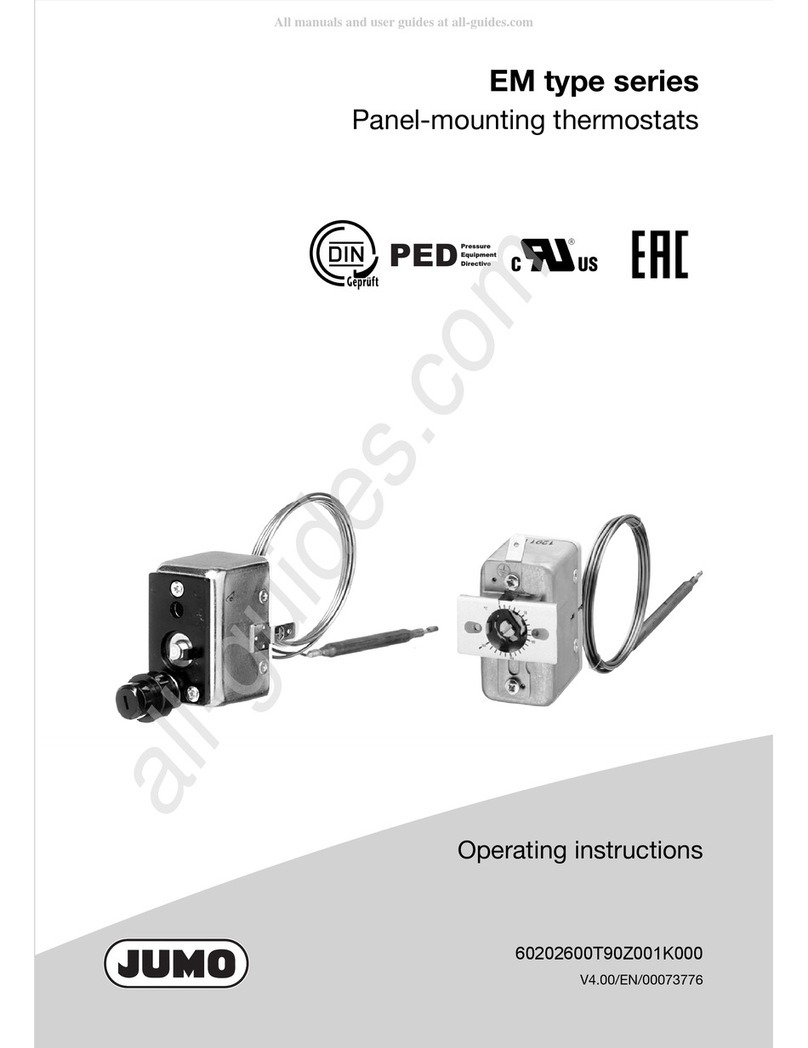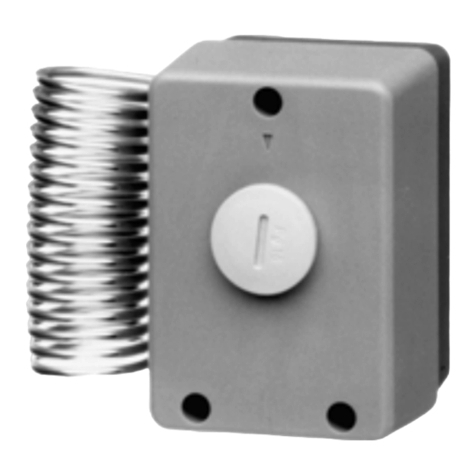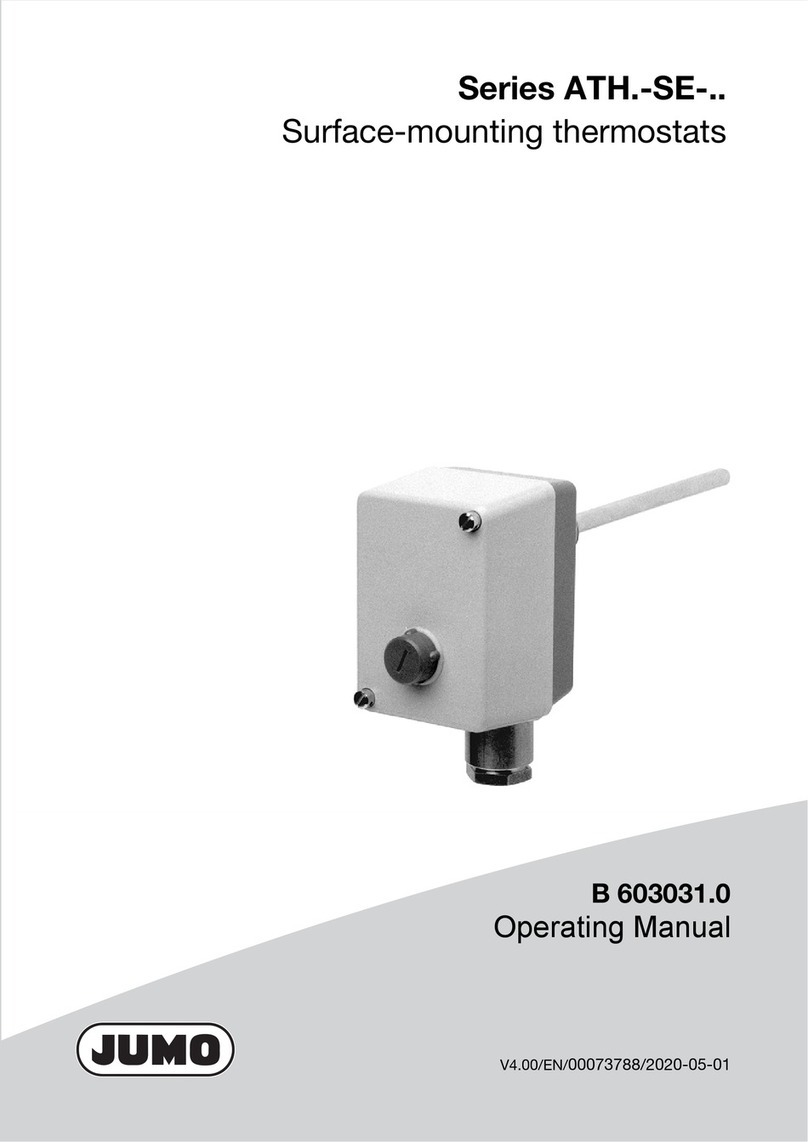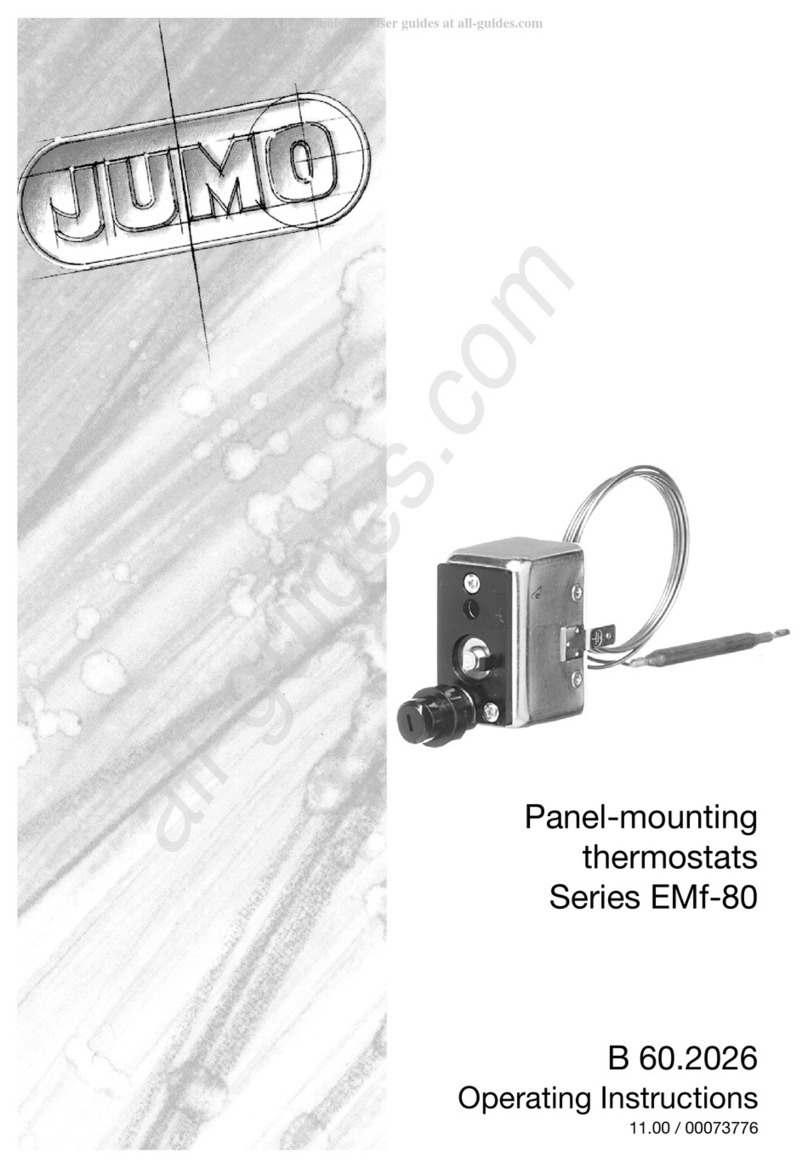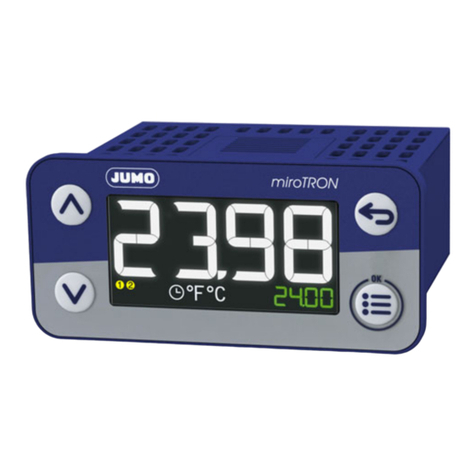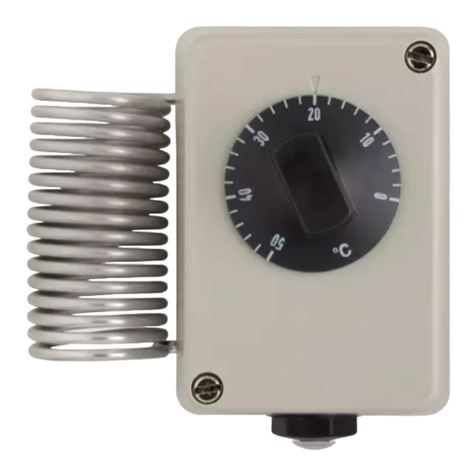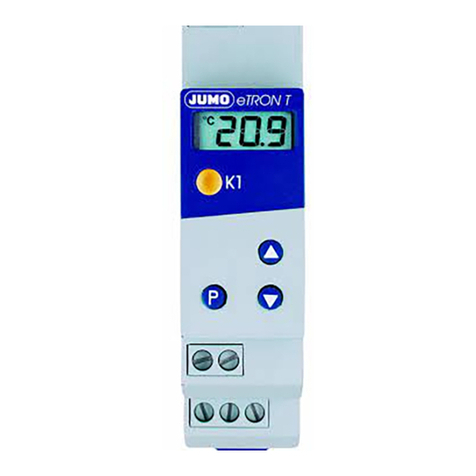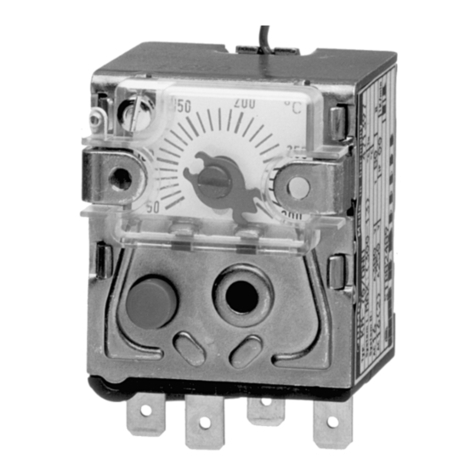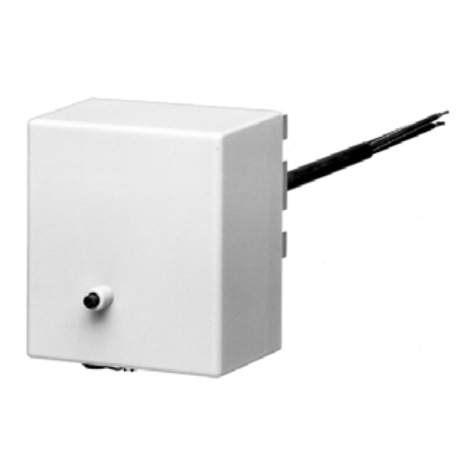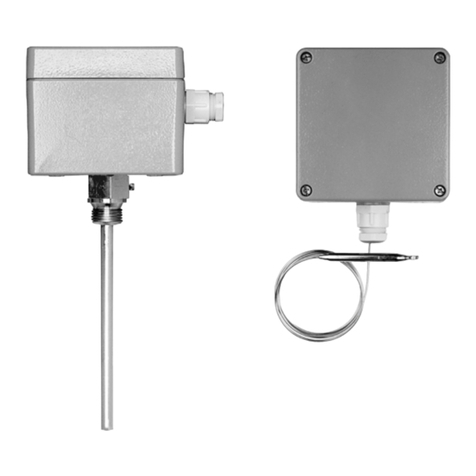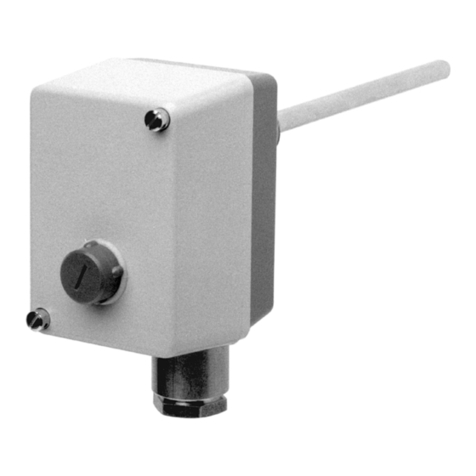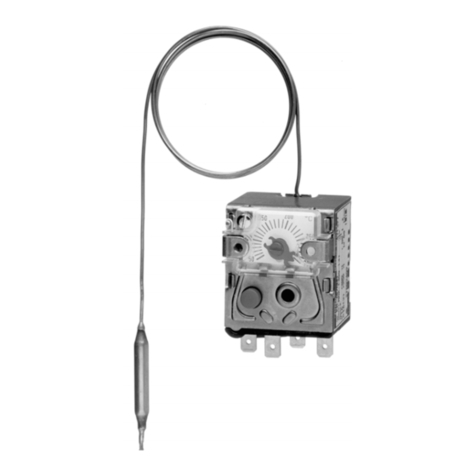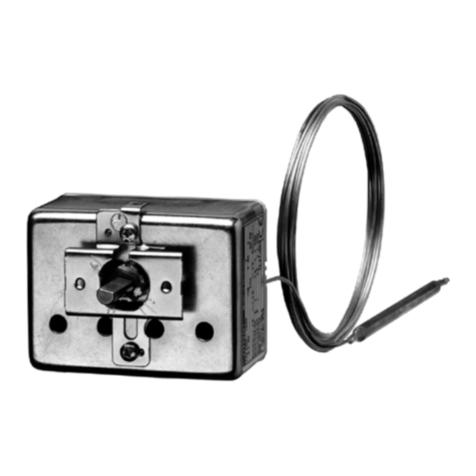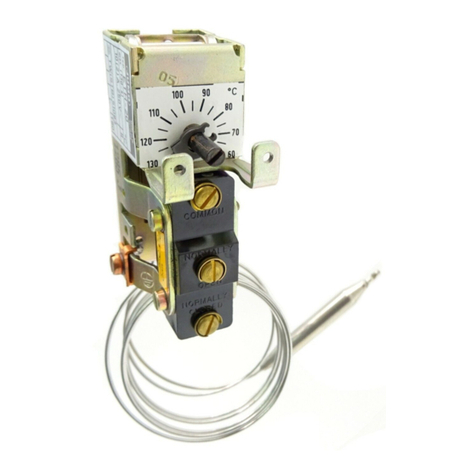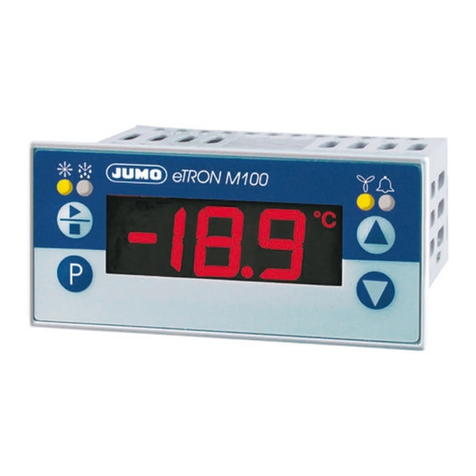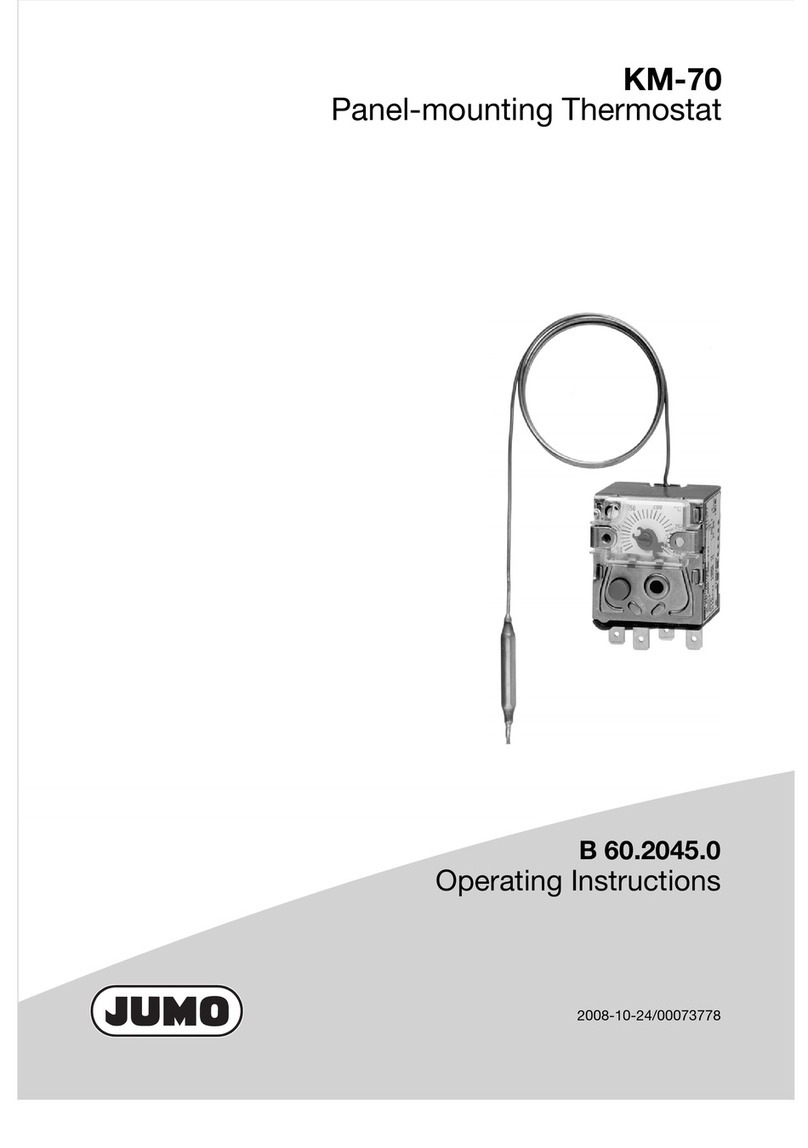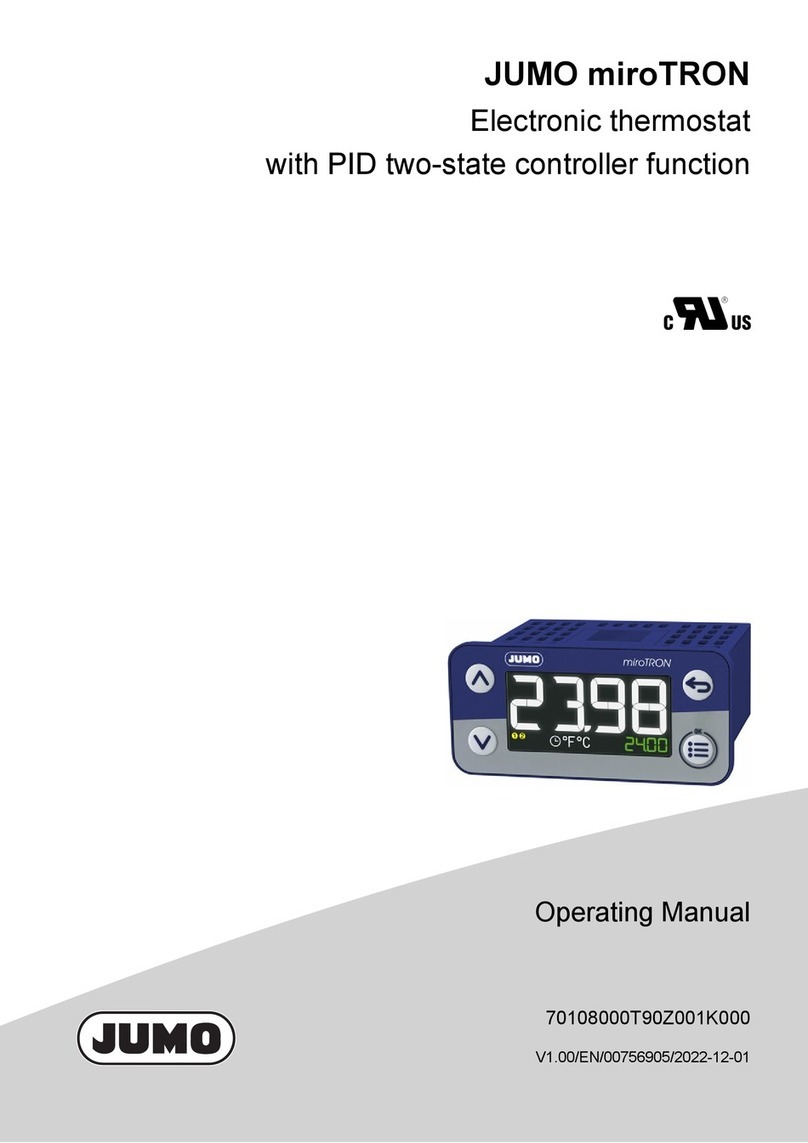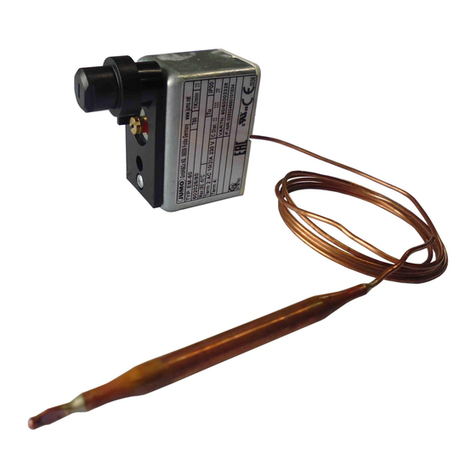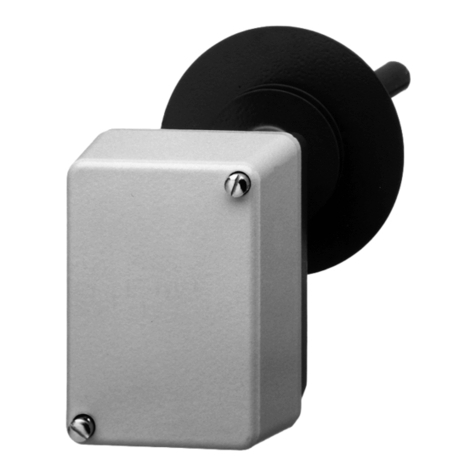4 Installation
Vorschriften und Hinweise
Elektrischer Anschluss
hAnschlussverbindung ist geeignet für fest verlegte Leitung
hLeitungseinführung erfolgt ohne Zugentlastung
hAnbringungsart "X" (ohne besondere Zurichtung)
Anschlussbelegung
hKabel durch den Würgenippel ( 9 ) führen
hKabel an den Anschlussschrauben ( 8 )
✱ verdrahten (siehe Anschlussbild)
( 8 ) Anschlussschrauben
( 9 ) Würgenippel M 20 x 1,5,
(7)Dichtbereich Ø 8-10 mm
Anschlussbild
aDer elektrische Anschluss darf nur von Fachpersonal durchgeführt
werden.
aBei der Wahl des Leitungsmaterials, bei der Installation und beim elek-
trischen Anschluss des Gerätes sind die Vorschriften der VDE 0100
"Bestimmungen über das Errichten von Starkstromanlagen mit Nenns-
pannungen unter 1000 V" bzw. die jeweiligen Landesvorschriften zu
beachten.
aDas Gerät völlig vom Netz trennen, wenn bei Arbeiten spannungs-
führende Teile berührt werden können.
aGerät an der Klemme PE mit dem Schutzleiter erden. Diese Leitung
sollte mindestens den gleichen Querschnitt wie die Versorgungsleitungen
aufweisen. Erdungsleitungen sternförmig zu einem gemeinsamen
Erdungspunkt führen, der mit dem Schutzleiter der Spannungsversor-
gung verbunden ist. Erdungsleitungen nicht durchschleifen, d.h. nicht
von einem Gerät zum anderen führen.
aNeben einer fehlerhaften Installation können auch falsch eingestellte
Werte am Thermostat den nachfolgenden Prozess in seiner ordnungs-
gemäßen Funktion beeinträchtigen oder zu sonstigen Schäden führen.
Die Einstellung sollte nur dem Fachpersonal möglich sein. Bitte in diesem
Zusammenhang die entsprechenden Sicherheitsvorschriften beachten.
4 Installation
Regulations and notes
Electrical connection
hThe connection is suitable for fixed wiring
hCable entry without strain relief
hType X attachment (no special preparation)
Terminal assignment
hPass cable through clamping gland ( 9 )
hConnect cable to the terminals ( 8 )
✱ (see connection diagram)
( 8 ) Connection terminals
( 9 ) Clamping gland M 20 x 1.5,
(7)ffor 8 – 10 mm cable diameter
Connection diagram
aThe electrical connection must only be carried out by qualified
personnel.
aThe choice of cable, the installation and the electrical connection must
conform to the requirements of VDE 0100 “Regulations on the installation
of power circuits with nominal voltages below 1000 V” or the appropriate
local regulations.
aEnsure that the instrument is completely isolated from the mains
supply before carrying out work where live components may be touched.
aEarth the instrument at the PE terminal to the protective earth
conductor. This cable must have at least the same cross-section as the
supply cables. Earthing cables must be wired in star configuration to a
common earthing point which is connected to the protective earth
conductor of the supply. Do not loop the earthing cables, i.e. do not run
them from one instrument to another.
aApart from faulty installation, incorrect settings on the thermostat may
also affect the proper functioning of the subsequent process or lead to
damage. Adjustments should therefore only be made by qualified
personnel. Please observe the corresponding safety regulations in this
matter.
Raumthermostat befestigen
Nennlage: nach DIN 16 257, NL 0 ... NL 90
Gehäuse öffnen
AMRc-1
AMRc-2
hSollwertsteller ( 2 ) nur bei AMRc-1
✱von der Sollwertspindel ( 3 ) abziehen
hZylinderschrauben ( 6 )
✱ am Gehäuseoberteil ( 4 ) lösen
hGehäuseoberteil ( 4 )
✱vom Gehäuseunterteil ( 5 ) abnehmen
( 1 ) Temperaturfühler
( 2 ) Sollwertsteller
( 3 ) Sollwertspindel
(4)Gehäuseoberteil
( 5 ) Gehäuseunterteil
( 6 ) Zylinderschrauben
Gehäusebefestigung
AMRc-1
AMRc-2
hMit 2 Schrauben durch die vorgesehenen
✱Bohrungen ( 7 ) an der Wand befestigen.
( 7 ) Bohrung Wandhalterung
( 9 ) Würgenippel M 20 x 1,5,
(7)Dichtbereich Ø 8-10 mm
Zwischen dem Temperaturfühler und der Befestigungswand sollte
ein Mindestabstand von 3 mm eingehalten werden, um eine Tempe-
raturbeeinträchtigung zu vermeiden.
Fixing the room thermostat
Nom. position: to DIN 16 257, NL 0 – NL 90
Opening the housing
AMRc-1
AMRc-2
hPull setpoint knob ( 2 ) (AMRc-1 only)
✱✱off the setpoint spindle ( 3 )
hUnscrew the cheese head screws ( 6 )
✱✱on the housing top ( 4 )
hTak e o ff the ho u sing top ( 4 )
✱from the housing bottom ( 5 )
( 1 ) Temperature probe
( 2 ) Setpoint knob
( 3 ) Setpoint spindle
( 4 ) Housing top
( 5 ) Housing bottom
(6)Cheeseheadscrews
Mounting the housing
AMRc-1
AMRc-2
hOn the wall, with 2 screws through
✱the holes ( 7 ) provided.✱
( 7 ) Hole for wall fixing
( 9 ) Clamping gland M 20 x 1.5,
(7)for 8 – 10 mm cable diameter
The distance between temperature probe and mounting surface
should be at least 3 mm, to avoid temperature effects on the probe.
(8)
(9)
M20x1,5
1
12
23
3
(1)
(2)
(3)
(4)
(5)
M20x1,5
(6)
(6)
123
(7)
(7)
(9)
(1)
(2)
(3)
(4)
(5)
M20x1,5
(11)
(2)
(12)
(1)
(4)
(5)
M20x1,5
Gehäuse schließen
AMRc-1
hKunststoffdichtung im Gehäuseunterteil ( 5 )
✱ auf richtigen Sitz kontrollieren.
hGehäuseoberteil ( 4 ) auf das
✱Gehäuseunterteil ( 5 ) setzen.
hZylinderschrauben ( 6 ) festdrehen.
hSkalenknopf aufstecken
AMRc-2
✱ Kunststoffdichtung im Gehäuseunterteil ( 5 )
✱auf richtigen Sitz kontrollieren.
✱ Gehäuseoberteil ( 4 ) auf das Gehäuseunterteil ( 5 ) setzen
✱ Zylinderschrauben ( 6 ) festdrehen.
5 Einstellungen / Sollwerteinstellung
AMRc-1, Temperaturregler TR
✱ Sollwertsteller über Außenskala ( 2 ) von Hand verdrehen.
( 11 ) Sollwertzeiger
(2)0Außenskala
( 12 ) Skalenteilung
AMRc-2, Temperaturwächter TW
✱ Gehäuse öffnen
✱ Grenzwert mit Schraubendreher am Sollwersteller ( 13 ) einstellen
✱ Gehäuse schließen
( 13 ) Sollwertsteller
(6)
(6)
123
(13)
Closing the housing
AMRc-1
hCheck that the plastic seal in the bottom of the
housing ( 5 ) is seated correctly.
hPlace the housing top ( 4 ) on the
✱housing bottom ( 5 ).
hTighten up the cheese head screws ( 6 ).
hPush the setpoint knob onto the spindle
AMRc-2
hCheck that the plastic seal in the bottom of the housing ( 5 )
✱is seated correctly.
hPlace the housing top ( 4 ) on the housing bottom ( 5 )
hTighten up the cheese head screws ( 6 ).
5 Settings / Setpoint adjustment
AMRc-1, temperature controller TR
hRotate the setpoint knob by hand over the external scale ( 2 ).
(11)Setpointmarker
(2)0External scale
( 12 ) Scale division
AMRc-2, temperature monitor TW
hOpen the housing
hSet the limit on the setpoint adjuster ( 13 ) with a screwdriver
hClose the housing
( 13 ) Setpoint adjuster
Fixation du thermostat d’ambiance
Position nominale : suivant DIN 16 257, NL 0 à NL 90
Ouverture du boîtier
hRetirer le bouton de consigne ( 2 ) uniquement pour AMRc-1
de l’axe ( 3 )
hDévisser les vis à tête cylindrique ( 6 )
✱ de la partie sup. du boîtier ( 4 )
hRetirer la partie sup. du boîtier ( 4 )
✱de la partie inf. du boîtier ( 5 )
( 1 ) Sonde de température
( 2 ) Bouton de consigne
( 3 ) Axe de consigne
( 4 ) Partie sup. du boîtier
( 5 ) Partie inf. du boîtier
( 6 ) Vis à tête cylindrique
Fixation du boîtier
AMRc-1
AMRc-2
hFixer au mur à l’aide des 2 vis prévues aux
perçages ( 7 ).
(7)Perçagepourfixationmurale
( 9 ) Passe-fil anti-traction M 20 x 1,5,
(7)Plage d’étanchéité Ø 8-10 mm
Il faut maintenir un écart d’au moins 3 mm entre la
sonde de température et le mur de fixation pour éviter
de gêner la mesure de température.
4 Installation
Prescriptions et remarques
Raccordement électrique
hRaccord adapté à un câble fixe
hLe câblage est réalisé sans anti-traction
hType d’attache “X” (sans préparation particulière).
Câblage
hIntroduire le câble dans le passe-fil ( 9 )
hRaccorder le câble aux vis ( 8 )
✱ (voir schéma de raccordement)
( 8 ) Vis de raccordement
( 9 ) Passe-fil anti-traction M 20 x 1,5,
(7)Plage d’étanchéité Ø 8-10 mm
Schéma de raccordement
aLe raccordement électrique doit être effectué exclusivement
par du personnel qualifié ou habilité.
aAussi bien pour le choix du matériau des câbles, que pour
l’installation ou bien le raccordement électrique de l’appareil,
il faut respecter la réglementation en vigueur
(voir DIN VDE 0100)
aDébrancher les deux conducteurs du réseau lorsque des
pièces sous tension peuvent être touchées lors d’une
intervention sur l’appareil.
aRaccorder l’appareil à la terre sur la borne PE, avec le
conducteur de protection. Ce conducteur doit avoir au moins
la même section que les lignes d’alimentation. Amener les
lignes de mise à la terre en étoile à un point de terre commu
relié à la tension d’alimentation par le conducteur de
protection. Ne pas boucler les lignes de mise à la terre,
c’est-à-dire ne pas les amener d’un appareil à un autre.
aOutre une installation défectueuse, des valeurs mal réglées
sur le thermostat peuvent altérer le bon fonctionnement du
process ou provoquer des dégâts. C’est pourquoi le réglage
ne doit être effectué que par du personnel qualifié.
À ce propos, nous vous prions de respecter les règles
de sécurité correspondantes.
Fermeture du boîtier
AMRc-1
hVérifier que le joint de la partie inférieure du boîtier ( 5 )
✱est bien en place.
hMettre la partie supérieure du boîtier ( 4 )
sur la partie inférieure ( 5 ).
hSerrer les vis à tête cylindrique (6).
hRemettre le bouton de consigne ( 2 ) sur son axe.
5 Réglage de la consigne
AMRc-1, régulateur de température TR
hTourner à la main le bouton de consigne
sur l’échelle externe ( 2 ).
(2)0Échelle externe
( 11 ) Repère de consigne
( 12 ) Graduation de l’échelle
AMRc-2, contrôleur de température TW
hOuvrir le boîtier
hRégler la valeur limite à l’aide d’un tournevis sur
le bouton de consigne ( 13 )
hFermer le boîtier
( 13 ) Bouton de consigne
AMRc-2
hVérifier que le joint de la partie inférieure du boîtier ( 5 )
✱ est bien en place.
hMettre la partie supérieure du boîtier ( 4 )
sur la partie inférieure ( 5 ).
hSerrer les vis à tête cylindrique (6).
